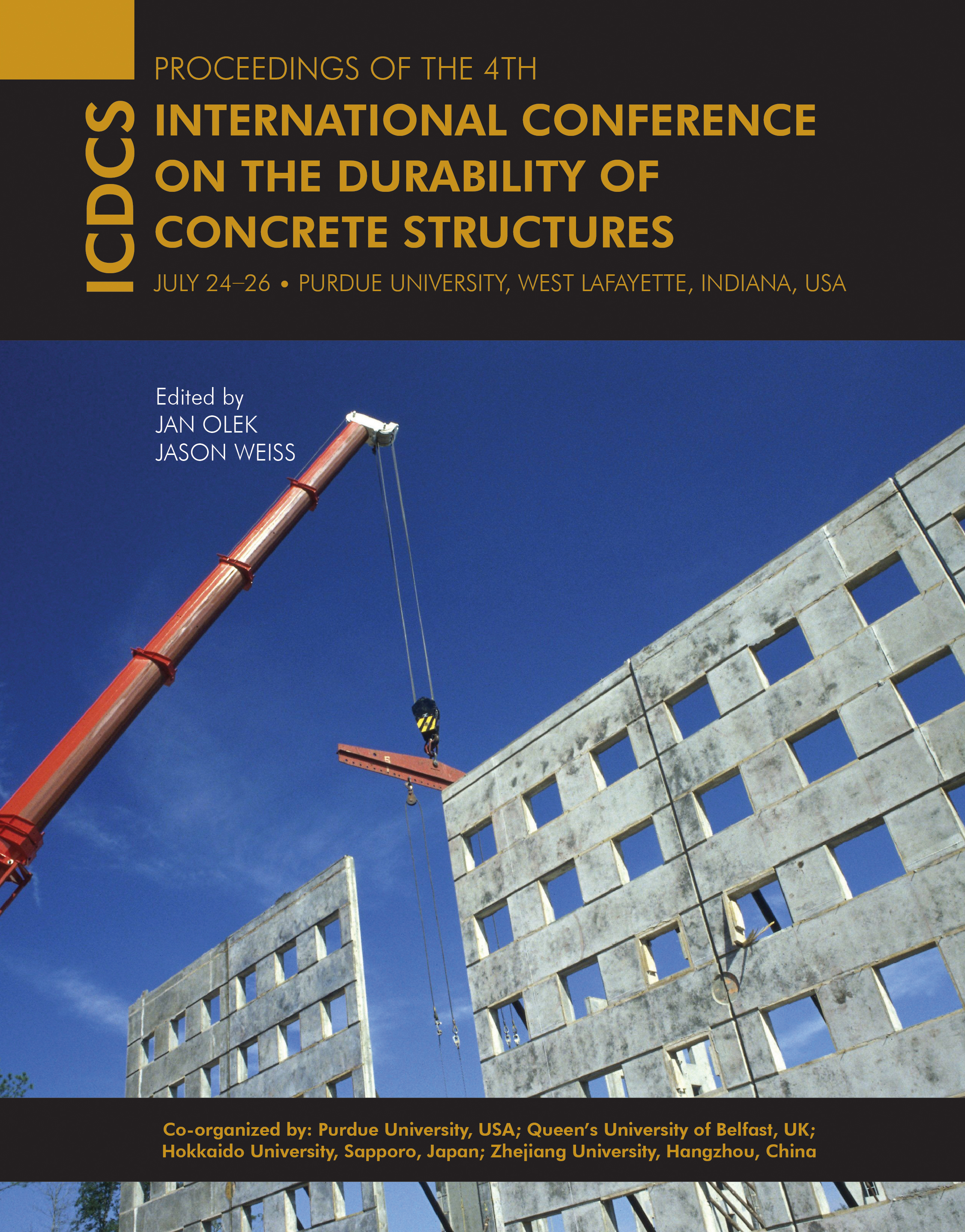Abstract
In this paper, several transversely cracked RC beams, self-anchored in a three-point bending mode, were prepared and subjected to NaCl solution drying–wetting cycles. Based on two experimental results obtained after 15 and 30 cycles, respectively, the profiles of free chloride concentration at different sections of sound and cracked concretes were presented and analyzed. The depth of surface convection zone in cracked concretes subject to chloride drying–wetting cycles is about 10–20 mm, which may increase gradually with the increasing of crack width. Then, it can be found that the speed of chloride penetration in concrete will be increased by cracks. Based on the equivalent diffusion model proposed in this paper, the apparent chloride diffusion coefficients for all sound and cracked sections were calculated. It can be found from the fitting precision that the equivalent diffusion model is suitable for analyzing the chloride penetration in flexural cracked concrete when its surface crack width is less than 0.3 mm. Furthermore, the relationship between crack width and equivalent diffusion coefficient can be described with quadratic function of crack effect.
DOI
10.5703/1288284315398
Included in
Effect of Transverse Crack on Chloride Penetration into Concrete Subjected to Drying–Wetting Cycles
In this paper, several transversely cracked RC beams, self-anchored in a three-point bending mode, were prepared and subjected to NaCl solution drying–wetting cycles. Based on two experimental results obtained after 15 and 30 cycles, respectively, the profiles of free chloride concentration at different sections of sound and cracked concretes were presented and analyzed. The depth of surface convection zone in cracked concretes subject to chloride drying–wetting cycles is about 10–20 mm, which may increase gradually with the increasing of crack width. Then, it can be found that the speed of chloride penetration in concrete will be increased by cracks. Based on the equivalent diffusion model proposed in this paper, the apparent chloride diffusion coefficients for all sound and cracked sections were calculated. It can be found from the fitting precision that the equivalent diffusion model is suitable for analyzing the chloride penetration in flexural cracked concrete when its surface crack width is less than 0.3 mm. Furthermore, the relationship between crack width and equivalent diffusion coefficient can be described with quadratic function of crack effect.





